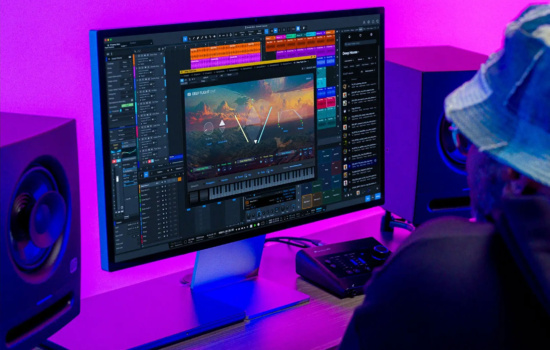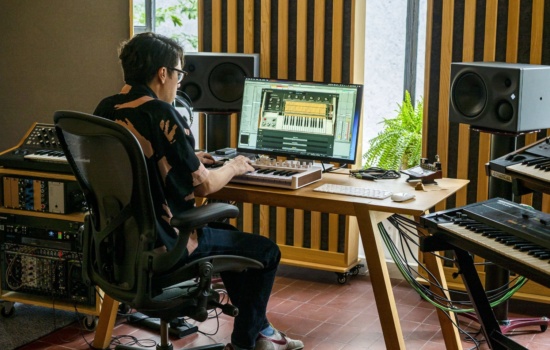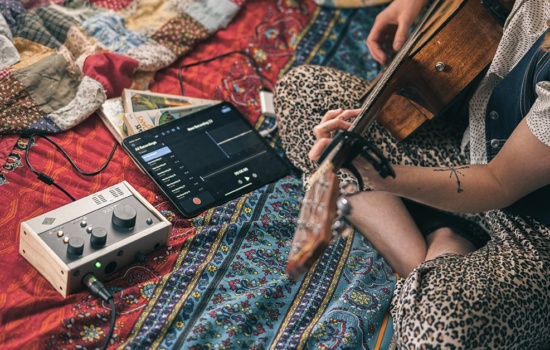A Digital Audio Workstation is software that lets you record, edit, produce, and mix audio on a computer or mobile device. Think of it as the combination of a multitrack tape machine, a mixing desk, a rack full of effects, and a MIDI sequencer—only faster and cheaper. Avid’s own definition calls it “the central hub of any studio.”
Music Career Finder
Survey Start
What Digital Audio Workstations Really Do in 2025
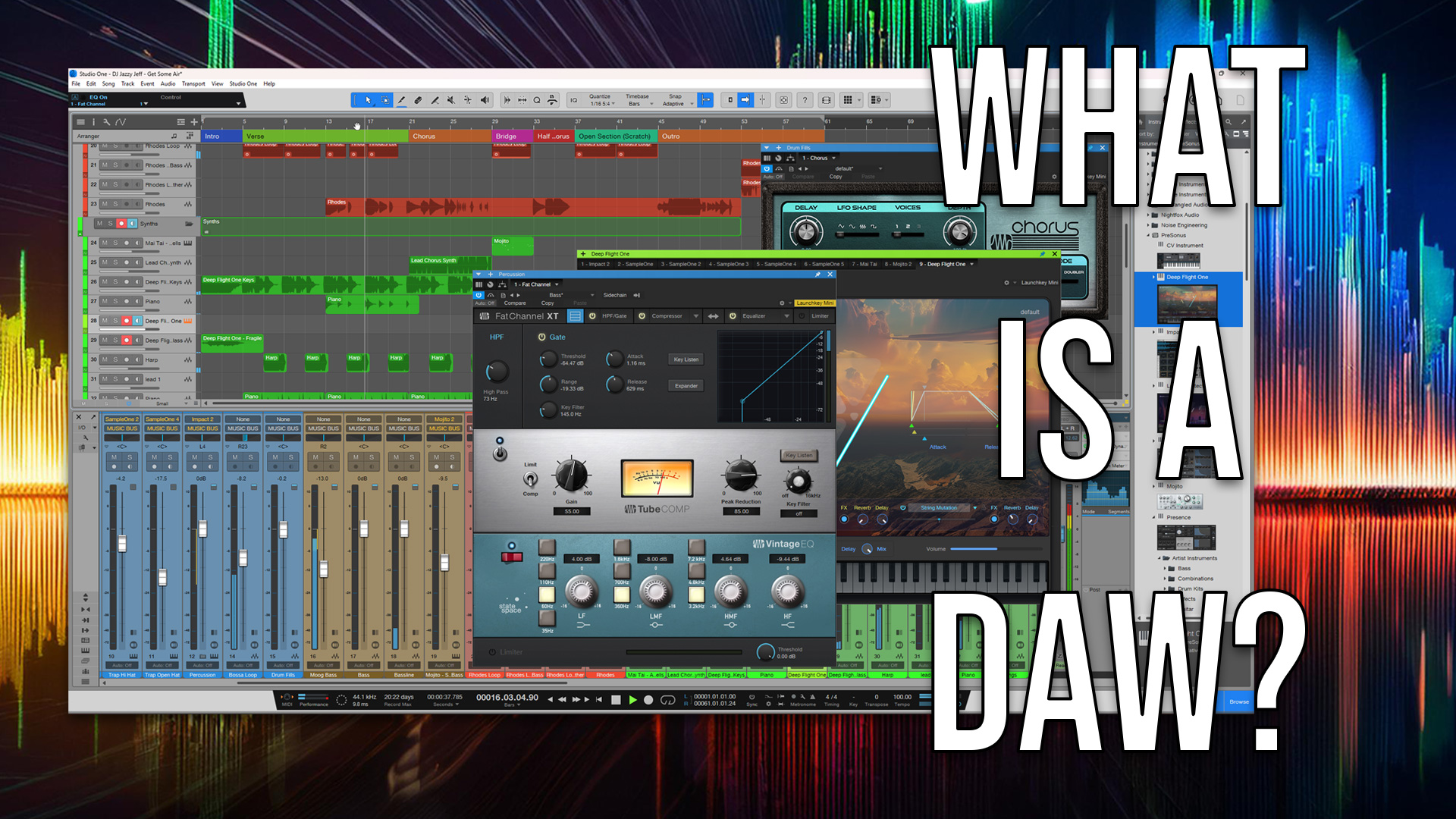
- A DAW (Digital Audio Workstation) is the software “studio” where you record, edit, mix, and master music.
- Audio tracks, MIDI sequencing, and plugins live side‑by‑side inside every DAW.
- Workflow matters: loop‑based, linear, live‑performance, and pattern views all feel different.
- Look for modern must‑haves like ARA 2, Dolby Atmos stems, AI cleanup tools, and cloud collaboration.
- Hard truths: steep learning curves, CPU demands, and plugin addiction can stall creativity—focus on finishing songs.
- Start free, keep it simple, and grow into the DAW that lets you stay in the flow.
- Introduction
- What Is a DAW?
- The Elevator Pitch
- A Two‑Minute History
- Core Components You’ll Use Every Day
- 1. Audio Recording & Editing
- 2. MIDI Sequencing
- 3. Virtual Instruments & Samplers
- 4. The Mixer
- Popular Workflow Styles
- Must‑Have Features in 2025
- How to Choose the Right DAW
- The Gear You’ll Need Beyond Software
- The Hard Truths (and Why They’re Worth It)
- Quick‑Start Checklist
- Frequently Asked Questions
- Do I need expensive plugins?
- Is mobile production legit?
- Which DAW sounds best?
- Conclusion
- Sources
Ever wonder how Billie Eilish can cut radio‑ready vocals in a bedroom—and what piece of software makes it possible?
This article unpacks exactly what a Digital Audio Workstation is, why it replaced the million‑dollar studio console, the essential features you really need, how to choose the right platform, and the hidden pitfalls no one tells beginners about.
What Is a DAW?
The Elevator Pitch
- Audio Tracks: Capture vocals, guitars, podcasts, or foley.
- MIDI Tracks: Play virtual instruments or control hardware synths.
- Plugins: Add EQ, compression, reverb, or tape saturation.
- Mix Bus: Blend every element into a finished stereo or Atmos file.
A Two‑Minute History
The journey from razor‑blade tape edits to today’s drag‑and‑drop loops began in the late‑’80s when computers gained enough horsepower to handle both digital audio and MIDI. Steinberg’s VST standard in 1996 glued the pieces together, ushering in the modern DAW. By 2025, AI features like Output’s new “Re‑imagine” sample tool are pushing boundaries even further.
Core Components You’ll Use Every Day
Hey, what do you think about trying our new Music Career HelperMusic Career Helper really quick? It’s totally free and could help get your career moving fast! Give it a try. It’s totally free and you have nothing to lose.
1. Audio Recording & Editing
Cut, copy, paste, time‑stretch, or pitch‑shift without degrading quality—a revolution SoundGym’s beginner guide calls the DAW’s real super‑power.
There are some other advantages, too, like having multiple channels of inputs for recording bands and ensembles or providing a software mixer for setting up monitoring groups, DSP processing or internal recording. A good audio interface is also much more efficient in terms of computing power and will be fast enough to allow you to monitor audio and software instruments in real-time. All in all an audio interface is a huge upgrade over the sound engine of a computer and is vital in providing the full DAW experience.
They come in all shapes and sizes depending on what you need. Head over to our audio interface article for some recommendations.
2. MIDI Sequencing
Draw notes in a piano‑roll, tweak velocity, automate filters—perfect for electronic music or film scoring.
3. Virtual Instruments & Samplers
From realistic strings to 808s, virtual instruments now rival hardware synths. Many DAWs come with full production suites; others rely on third‑party plugins.
4. The Mixer
Route tracks, set levels, add buses, and print stems in stereo or immersive formats. Expect built‑in loudness meters and Dolby Atmos panners in newer versions.
Popular Workflow Styles
Not every DAW feels the same. MusicRadar’s roundup highlights how Ableton Live excels at real‑time launching, FL Studio at pattern‑based beat‑making, and Logic Pro at MIDI orchestration.
- Linear: Traditional tape‑style timeline (e.g., Pro Tools, Reaper).
- Clip/Scene: Loop‑friendly for live performance (Ableton, Bitwig).
- Pattern: Step‑sequencer focus for hip‑hop/electronic (FL Studio).
- Hybrid: Combines all three (Studio One, Logic Pro).
Must‑Have Features in 2025
- ARA 2 Integration: Seamless vocal tuning and spectral editing.
- Dolby Atmos & 360‑Audio: Mix immersive tracks without extra hardware.
- Cloud Collaboration: Exchange sessions instantly—no hard‑drive swaps.
- AI Helpers: Stem separation, noise cleanup, and sample “re‑imagining.”
- Post‑Production Extras: Video timeline, loudness normalization, ADR tools.
How to Choose the Right DAW
All major platforms can finish a chart‑topping song, yet each shines in specific scenarios:
- Recording full bands: Pro Tools, Cubase
- Electronic/EDM: Ableton Live, FL Studio
- Composing for film: Logic Pro, Studio One, Digital Performer
- Bargain / open‑source: Reaper, Cakewalk by BandLab, Ardour
Still undecided? Check our in‑depth guide to the best DAWs for every workflow.
The Gear You’ll Need Beyond Software
Even a phone can run GarageBand, but for studio‑quality results you’ll want:
- Audio Interface: Converts analog to digital; look for low‑latency drivers.
- MIDI Controller: A 25‑key keyboard is enough to program drums and chords.
- Monitoring: Decent headphones or studio monitors so you actually hear what you’re doing.
Deep‑dive into interfaces in our audio‑interface roundup and controller keyboards in this buyer’s guide.
The Hard Truths (and Why They’re Worth It)
- Learning Curve: Expect weeks of fumbling before muscle memory kicks in.
- Analysis Paralysis: Too many plugins can kill creativity; limit yourself.
- CPU & Latency: Heavy sessions choke laptops—freeze tracks and raise buffer sizes.
- Updates Break Stuff: Always back up projects before upgrading.
- Subscription Fatigue: Some leading DAWs have moved to monthly plans.
Feeling overwhelmed? Remember every producer you admire started as a total newbie. Keep your rig simple, finish small projects, and watch your confidence grow.
Quick‑Start Checklist
- Download a free trial (most DAWs offer 30 days).
- Complete a “record, loop, export” mini‑project on day one.
- Learn one shortcut per session—it compounds fast.
- Reference commercial tracks to calibrate your ears.
- Finish songs, not plugin collections.
Frequently Asked Questions
Do I need expensive plugins?
No. Stock plugins in modern DAWs are astonishingly good. Master them before opening your wallet.
Is mobile production legit?
Yes. Apps like GarageBand iOS or FL Studio Mobile can capture ideas anywhere. You can later move stems into the desktop DAW.
Which DAW sounds best?
They all use 32‑bit floating‑point math; differences you hear usually come from stock plugins or workflow—not the audio engine alone.
Conclusion
A DAW is the creative headquarters where riffs become records, podcasts become stories, and ideas become something you can stream on the bus. Pick the one that makes you excited to hit Record, focus on the music instead of the menu, and let the songs speak for themselves.
Sources
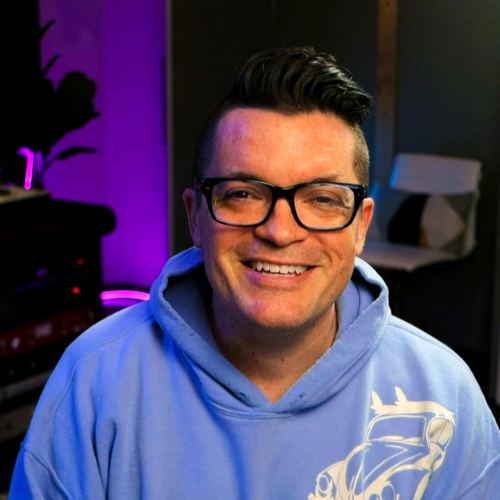
Dana Nielsen
Dana Nielsen is a Grammy-nominated mixer, engineer, producer, and multi-instrumentalist with an impressive portfolio that includes work with artists like SZA, Rihanna, Adele, Post Malone, The Smashing Pumpkins, Neil Young, Justin Timberlake, Weezer, The Avett Brothers, Bob Dylan, and Kanye West. Known for his versatility, Nielsen has collaborated extensively with legendary producer Rick Rubin, contributing to projects that span a wide range of genres, from Neil Diamond to Slayer.
Rick Rubin has often relied on Nielsen’s expertise for key projects, like Justin Timberlake’s FutureSex/LoveSounds, Red Hot Chili Peppers’ Stadium Arcadium, and The Smashing Pumpkins’ Shiny and Oh So Bright Vol. 1 (Napalm), which Nielsen recorded and mixed. In 2008, Nielsen mixed Neil Diamond’s #1 album Home Before Dark, and in 2013, he served as an engineer on Black Sabbath’s 13, the band’s first album to top the UK charts in 43 years. More recently, Nielsen has recorded and mixed albums for Santana and The Avett Brothers.
Nielsen has also made appearances on screen, showcasing his engineering talents alongside Rick Rubin and David Letterman in episode 4 (featuring Jay Z) of Letterman’s Netflix series My Next Guest Needs No Introduction. He is also featured in the SHOWTIME series Shangri-LA and the Judd Apatow/Michael Bonfiglio HBO documentary, May It Last: A Portrait of the Avett Brothers.
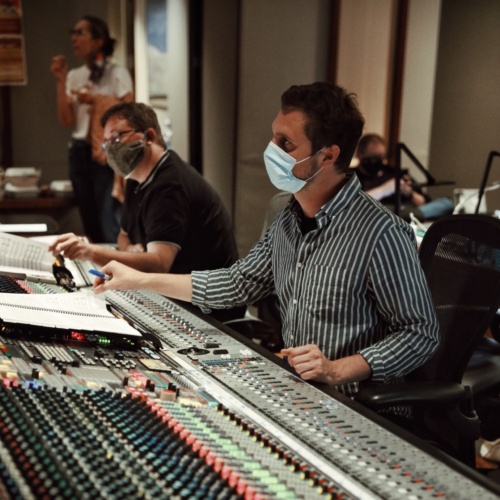
Thor Fienberg
Thor Fienberg is an Emmy-winning recording engineer and mixer working primarily in the film and television scoring world.
Before becoming an Emmy and CAS award-winning mixer for his work on the Apple TV+ series Master’s of the Air, he was producing and songwriting with a publishing deal under Producer John Shanks. He started working at Blake Neely’s Cow on the Wall Studio in 2016 and there he found a passion for engineering and mixing from working with top-tier engineers, such as Jason LaRocca, Greg Hayes, and Scott Michael Smith.
His works range from albums to video games and film works. Credits include: Minecraft Legends, Loki, It Ends with Us, and the upcoming Hulu series Chad Powers.
